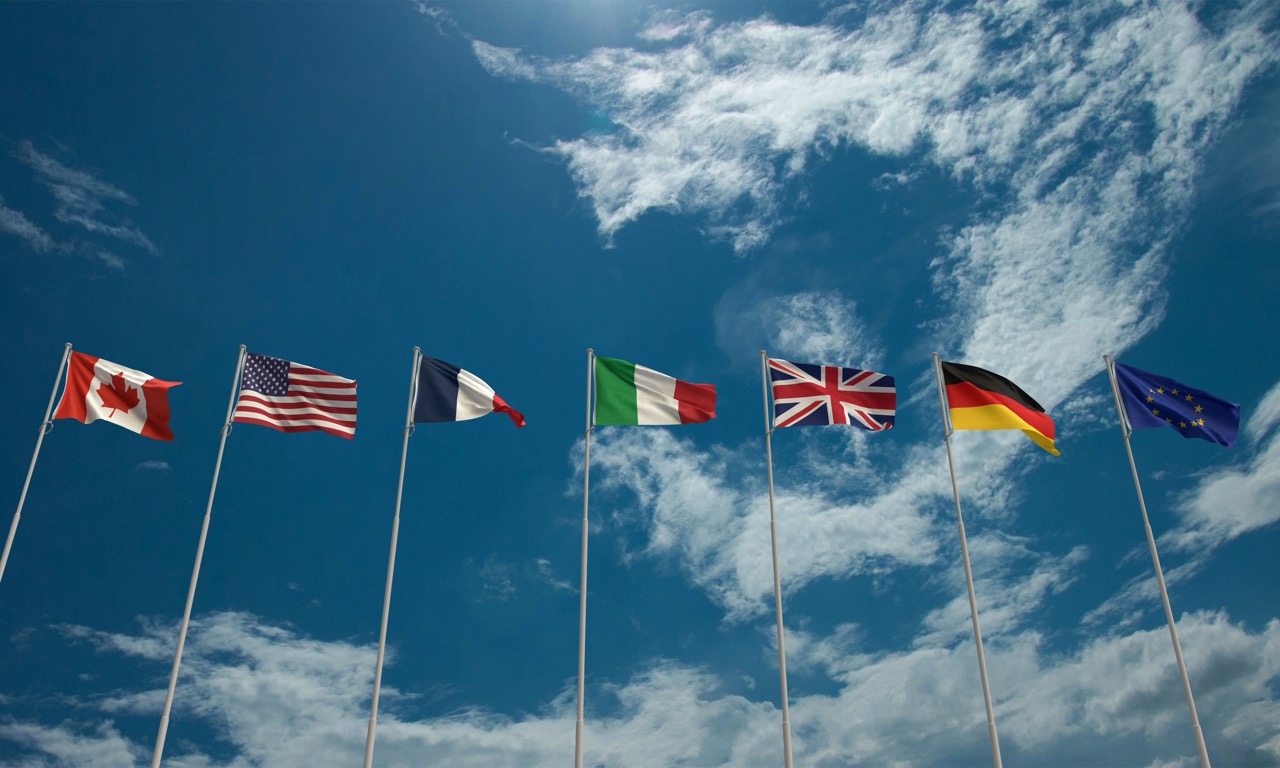G7 performance on development
Without peace, development lags – and at a summit dedicated to peace, development is in the spotlight
The significance of holding the G7 summit in Prime Minister Fumio Kishida’s home town of Hiroshima – a city that had to rebuild itself after an atomic bomb attack in 1945, with threats from nuclear weapons arising in 2023 – is clear. This summit is dedicated to peace. Without peace, development lags.
Conclusions
Since 1975, G7 leaders have dedicated an average of 17% of words in their communiqués to development. At Rambouillet in 1975, 15% were on development. Lows came in 1984 with 3%, in 2003 with 4% and in 2004 with 1%. Highs came in 1994 with 22%, in 1996 with 20%, in 2002 with an all-time high of 56%, in 2005 with 27%, in 2009 with 23% and in 2011 with 36%. A string of highs started in 2012 with 45%, and continued in 2013 with 39%, and 2014 with 36%, dropping a bit but still relatively high over the next four summits, and completing this phase in 2019 with 38%. Then there was a steep dip to 2% in 2020. But this was followed by a rise to 17% in 2021 and 36% in 2022.
Commitments
G7 leaders have made 732 commitments on development since 1975, the most on any subject, with an average of 16 commitments per summit. In 1975, they made just four commitments on development, but this accounted for 27% of the total. The next year, they made only one (10%). The most commitments on development came in 2004 with 53, for 21%.
At the summits Japan hosted there was a general rise in the number of development commitments. At Japan’s three Tokyo summits, the G7 produced seven (13%) in 1979, eight (21%) in 1986 and eight again (28%) in 1993. The 2000 Okinawa Summit made 19 (18%), the 2008 Hokkaido Summit 35 (12%) and the 2016 Ise-Shima Summit 23 (7%).
Most recently, the G7 made eight (11%) development commitments in 2019, none in 2020, 15 (4%) in 2021 and 14 (3%) in 2022.
Compliance
G7 members complied with their leaders’ development commitments at an average of 74%, based on the 59 commitments assessed for compliance by the G7 Research Group since 1996. This is just below the G7’s all-subject, all-year compliance average of 76%.
G7 development compliance gradually rose, but with much variation each year. It had a slow start — with all-time lows of 50% in 1996, 1997 and 1998.
Compliance soared to 93% from 1999, but plummeted again to 50% from 2000. It again rose to 75% from 2001, declined to 55% from 2002, and then rose to 80% from 2003. After a decline to 75% from 2004, it rose to 85% from 2005 and to 94% from 2006.
After this high, compliance again fluctuated between 2007 with 65% to 2015 in the mid-range with 75%. Then came a continued high: 2016 and 2017 had 81%, 2018 had 92%, 2019 had 84%, and 2021 had 100%. By January 2023, the G7 already had 81% compliance with the development commitments made in 2022.
Causes and corrections
Higher development compliance is linked to some easy-to-implement measures.
The highest compliance (92%) came with development commitments that reference the World Bank at 92%. Those referencing one-year timetables had 90%, those referencing finance ministers 87%, and those identifying a specific country 77%. Commitments on debt relief averaged compliance of 76%; the 31 commitments on official development assistance averaged 74%.
Higher compliance also came after development ministers’ meetings were held before the summit. Of the 11 years with development ministers’ meetings, nine were held before the summit, which averaged 81% compliance. Two were held after the summit, which averaged only 65%. Those 11 years when development ministers met averaged 78%, higher than the 74% overall average for development commitments. No development ministers meeting has been scheduled under Japan’s presidency.
Development working groups were created by at least six G7 summits. The three years with the highest compliance – 82% – established working groups on financing and sustainable development. The three years with the lowest compliance, averaging 72%, focused on Africa.
At Hiroshima, therefore, G7 leaders should structure their development commitments to refer to the World Bank, set a one-year timetable and include the finance ministers in discussions on financing and sustainable development.












